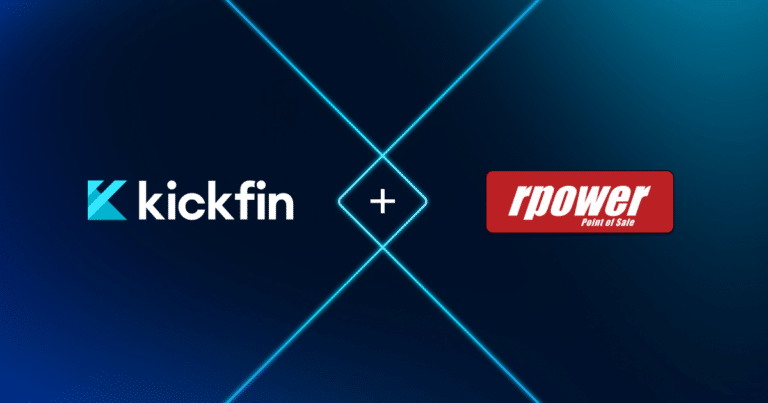AI is kind of having a moment right now.
It’s basically impossible to scroll through a newsfeed without stumbling across an article (or 10…) about the rapid developments we’re seeing in AI technology — and all of its benefits, risks, and mind-blowing potential to change life as we know it.
While AI is getting quite a bit of PR here in 2023, many industries have been embracing AI for years, including hospitality. From automated customer insights to voice assistants, AI is becoming increasingly entrenched in restaurant operations.
What even is AI?
AI (short for artificial intelligence) is an exciting new technology that’s changing nearly every industry — including the service and hospitality industries. AI is intended to take in information and respond in a way that mimics human responses. This means it can respond to queries with valuable information. If you use Alexa at home, you’re interacting with AI every day.
Machine learning is what makes AI really valuable, especially in restaurants. Machine learning takes in information from a data source (for example, your POS) and analyzes it. Once the tech “learns” from historical data, it can predict trends and behaviors in the future. For example, TikTok uses machine learning to determine which videos you’re more likely to engage with and shows you new content based on those predictions in hopes of keeping you on the app for longer.
Why use AI in your restaurant?
Running and managing a restaurant is stressful. Operators and managers wear a lot of hats, and it can be hard to streamline operations when you’re pulled in so many different directions. Restaurants can use AI to make life just a little bit easier — and cut costs while you’re at it.
Does that mean the service industry should start preparing for the inevitable robot takeover? Not just yet. The human element is still vital to many segments. But there’s never been a better time for restaurant operators to innovate: new AI advances can streamline and simplify everyday restaurant management processes, helping operators to uncover new efficiencies, increase staff and customer satisfaction, and ultimately boost your bottom line.
Here are a few ways AI can lighten your workload and optimize your restaurant operations.
1. Menu Development
Your chef and kitchen staff have been hard at work putting together delicious dishes that will turn your new customers into regulars, but how are you supposed to put all the flavors and components into a short, enticing description? With AI, you can skip the writer’s block and simply generate well-worded descriptions in seconds.

2. Hiring
Restaurants are still experiencing staffing shortages and struggling to fill positions — but what if AI could streamline your hiring efforts? There are a few ways to relieve the burden that staff issues have put on restaurant management.
- Writing job descriptions: Remember how we said it was tedious to write menu descriptions? Same goes for job descriptions. Of course, you want to provide all the details about the role, but sometimes it can be hard to creatively describe a serving job and show off your restaurant’s culture. Instead, turn to AI for quick job descriptions that only need to be slightly edited to show off more personality.
- Reviewing applications: Once you’ve posted your job online, you have a few different ways to leverage AI in the hiring process. For one, you can use AI to filter out candidates that don’t meet your requirements about experience, age, or availability. Then, you have fewer applications to wade through and can focus on serious candidates only.
- Chatbot: To really lean into the AI trend, you can also use an AI chatbot that has a text conversation with applicants to learn about their skills, job experience, pay expectations, and availability. Choose a chatbot that can integrate with your existing technology, so you don’t have to create your own software (unless you want to). Rather than filling out the traditional application form, your candidates will share about themselves in a more casual, conversational manner, almost like a pre-interview. These chatbots can still filter out candidates who aren’t going to be a good fit — and it might impress your more tech-savvy candidate pool.
Of course, you can also tackle staffing issues by automating some of your positions. QSRs can especially take advantage of AI voice assistants to man drive-thrus and take orders, while your human staff focuses on fulfilling them.
3. Scheduling
You’re not limited to AI writing tools. New technology can automate and optimize almost every aspect of your business, from front of house to back.
Now that AI’s streamlined your hiring practices, give it a chance to improve your schedule, too. Restaurant budgets can be tight, so you don’t want to have too many employees during a slow weekday lunch — but you also don’t want to be understaffed during a huge rush. Machine learning can analyze your sales data to determine peak times and the optimal amount of staff to schedule for a shift. You can put in parameters that will keep the schedule within budget, and then use the AI-generated roadmap to create your weekly schedule.
4. Forecasting
AI can do even more with your POS data to optimize your entire restaurant and predict trends, empowering you to make data-backed business decisions.
For example: inventory management. No one wants to over-order and let food spoil, nor do you want to 86 a popular dish because you ran out of one ingredient. With AI, you can utilize POS data to determine your best-sellers, which items you frequently run out of, and where you could be over-purchasing. With your inventory optimized, you’ll prevent food waste and serve your customers their first-choice dish.
>> Find out more about Revenue Forecasting for restaurants
5. Marketing & Customer Insights
Once you get people in the door, you want to keep your loyal customers coming back. Many small restaurants don’t have the luxury of a full-time employee to run their marketing efforts. Good news: You can employ AI instead.
Auto-generate marketing emails to let your customers know about specials, events, and coupons. If you have a loyalty program, you can even take it a step further. AI can figure out each customer’s most frequent orders and when they’re most likely to come in, and offer individualized deals based on their ordering habits. Your customers will feel like you really know them, and you can relieve pressure off the FOH manager who does marketing on the side.
6. Customer Engagement
While you don’t want to lose the human touch that really makes your customer experience, there are a few tasks you can pass off to AI that will free up managers’ and employees’ time for more pressing tasks (especially when they’re in the weeds on a busy Friday night).
If your phone is ringing off the hook with people asking about wait times, making a reservation, or wondering if you have outdoor seating, AI can help field calls and answer their questions. You can program the AI to pick up on certain terms (like “reservation”) to generate the answer your guests are looking for. If you can integrate AI with your waitlist and reservation software, the AI can add callers to your waitlist, estimate wait times, and create reservations.
Adding an AI chatbot to your website can also quickly engage customers, allowing them to get answers to specific questions that they’d normally call in to ask.
Of course, there are limitations to tech, especially in the communication and hospitality departments. When choosing to add any new technology to your restaurant operations, make sure that it gives you more tools to engage with customers — and doesn’t create a cold, mechanical dining experience. It’s there to make your life easier, but AI can’t replace good service and personal connections with your customers.
Looking to simplify your tip out process? Kickfin can help. Check out a demo of our instant digital tipping software.










